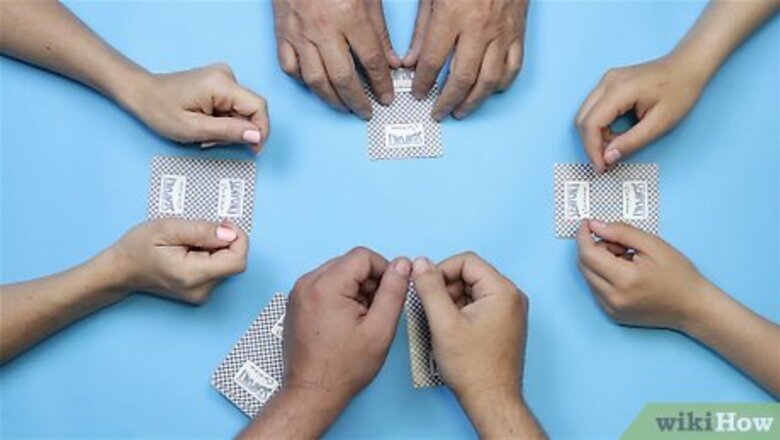
views
- Split into 2 teams and decide the winning score first. Then, remove all jokers from your deck and deal the cards evenly so that each player has 13 cards.
- Place a bet with your teammate about how many rounds you’ll win together before playing cards counterclockwise around the group.
- Win the round by playing the highest card. Then, after 13 rounds have been played, count the total you won with your partner to see if you succeeded in your bet.
- Award points for successful bets, and play to be the first team to reach your agreed final score.
Dealing the Cards
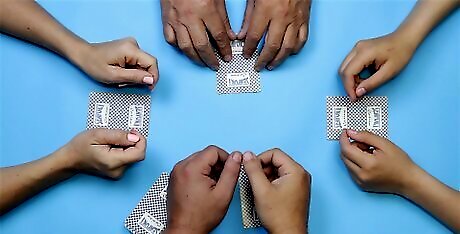
Split 4 players into teams of 2. Spades is traditionally played with 4 players. Gather a few friends and split into teams of 2, with teammates on opposite sides of the table. If you have extra players, play a tournament and have the winning team meet new opponents for each new game. If you’re playing with 2 people, go 1-on-1 instead of forming teams.
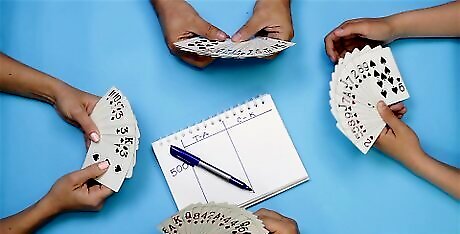
Agree to play to either 200 or 500 points. Before starting the game, decide whether you want to play a full-length game or a shorter game. A full-length game of Spades has teams competing to be the first to reach 500 points. A shorter game only goes to 200 points. Optionally, extend or shorten a game by adding or subtracting the total needed points in increments of 100.
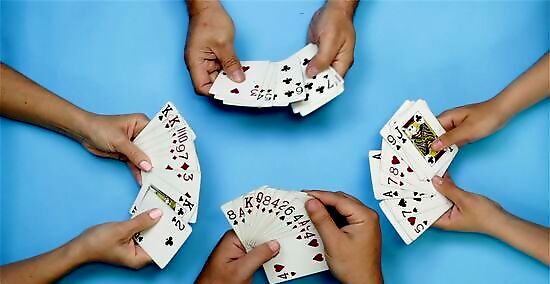
Remove the jokers from your deck and deal 13 cards to each player. Spades is played with a standard playing deck of 52 cards, with the jokers set aside. Shuffle the deck and deal all the cards face down, starting with the player on the dealer’s left, and distributing the entire deck clockwise among the players. It doesn’t matter who begins as the dealer, so choose at random or play rock, paper, scissors to determine the first dealer. Wait until all the cards have been dealt to pick your cards off the table. To play with only 2 players, place the deck face down on the table and take turns drawing a card off the top, until both players have 13 cards. You may discard a card you draw, but must place the next card into your hand.
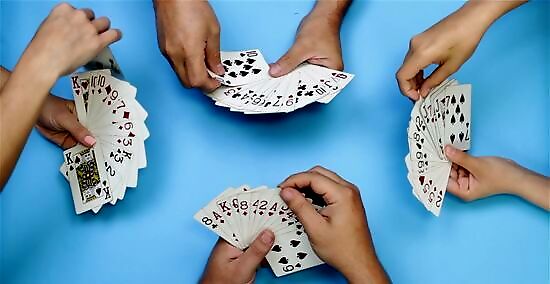
Give everyone a few moments to organize their cards. After all the cards are dealt, allow for a few moments for players to look over their hands. Take the opportunity to assess how good your cards are and organize them as you wish. During this time, players double-check how many cards they have to ensure they have 13 cards each. Arrange your cards by suit and rank in ascending order to help you assess your hand. In spades, the cards are ranked from highest to lowest in this order: A, K, Q, J, 10, 9, 8, 7, 6, 5, 4, 3, 2. Keep your cards a secret, even from your teammate.
Playing the Game
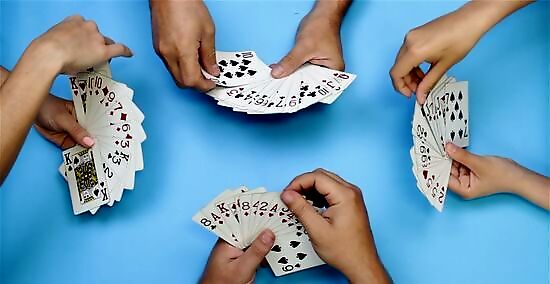
Examine your hand for high cards or spades, which can win tricks. A “trick” is the pot of cards players add to the center of the table, which each player wants to obtain for themselves by playing the highest card. As a general rule, a hand with higher cards has the potential to win the most tricks. Examine your hand and form a rough guess about how it might stack up against the other players’ hands Cards in the spades suit “trump” or are worth more than cards of other suits, so a hand with many spades is generally a good hand. You have a very good hand if you have high cards (A, K, Q, J) that are spades.
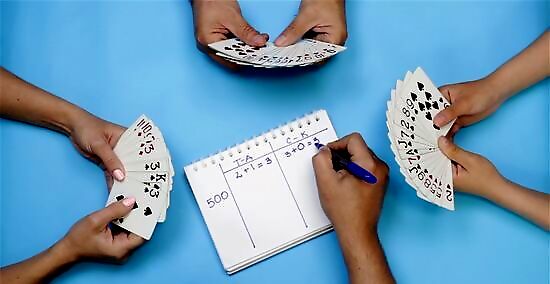
Make a contract bid with your teammate without revealing your hand. Starting with the player to the dealer’s left, each player makes a “bid,” or a prediction of how many tricks they’ll win that round. Every round has 13 tricks, so bid between 0 and 13—if you have many high cards, bid higher, like 8 or more; if you have mostly low cards, bid low, like 2-6. Teammates then add their individual bids together to find the minimum number of tricks they need to win that round. Don’t reveal your specific cards or their suits to anyone at the table (which is against the rules), only your confidence in them! Bidding “nil” means you don’t expect to win any tricks. If you succeed, your team earns an additional 100 points. If you’re playing with 2 players, simply make your own individual bid—this will be your target for the round.
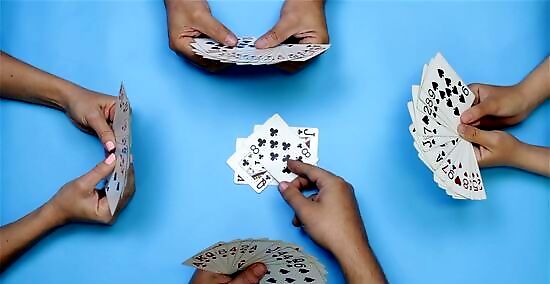
Play 1 card per player, starting with the player to the dealer’s left. The player to the dealer’s left plays a single card on the table of any suit except spades. Other players must play a card of the same suit in ascending order. If you do not have a card of the same suit to play, discard any card from a different suit—the next player must still play a card of the starting suit, if they can. If you don’t have a card matching the played suit when it’s your turn, you may “break spades” and play a spade, instead. After spades have been broken for the first time in a round, other players may start the next tricks with a spade. A player can start the trick with a spade if they have no other suits in their hand. For example, if player 1 leads with the 7 of clubs, each other player, if possible, must put down a club higher than 7 this round.
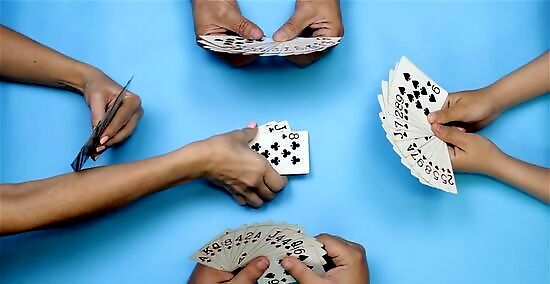
Win the trick by playing the highest card in the starting suit. Tricks are won by playing the highest card on the table of the starting suit, or by playing the highest spade. When you win a trick, take all 4 cards from that round and set them aside to score after the round. Each time you win the trick, set those 4 cards next to you in their own stack so that yourself and the other players can keep track of how many tricks you’ve won. If a spade was played, then the highest spade on the table wins, regardless of the starting suit. Note that you must play a card of the starting suit if possible, and may only play a spade if you don’t have a card of that suit in your hand. Discarding a card from a different suit will not win the trick.
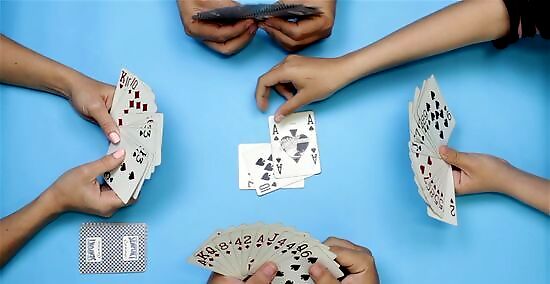
Play the next trick starting with the last trick’s winner. The person who picked up the last trick’s cards starts the next trick. Play 13 tricks each round for 4 rounds, or until the target score has been reached, tallying the score between each round. On the last trick of each round, players will simply play their last remaining card.
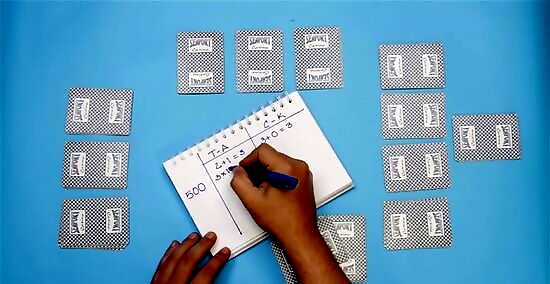
Count how many tricks your team won to see if you met your bid. Count the total number of tricks you won with your partner. If you met your team’s total bid for that round, multiply your bid by 10, then add the number of additional tricks (or “overtricks”) you won to find your score. If you’re team didn’t meet its bid, you simply win 0 points this round. For example, if you and your partner bid 6 tricks and successfully won 8 total tricks, your score is 6 x 10 (for each trick in your bid), then +2 for the additional tricks, for a score of 62 points that round. Announce every player’s score after tallying so that everyone knows the current ranking.
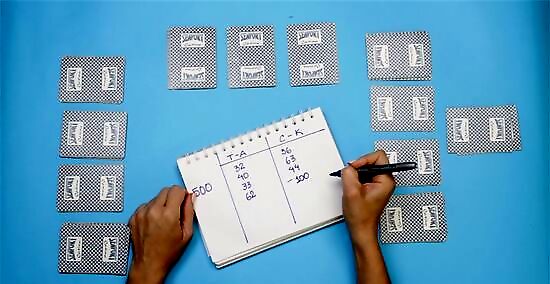
Score nil bids and sandbags. Remember to count your successful nil bids! Successful nil bids give you 100 points. Unsuccessful nil bids (if you bid nil but took any number of tricks) subtract 100 from your total points. Additionally, if you rack up 10 overtricks, or any won tricks that exceed your bid, you receive a “sandbag” penalty and are penalized 100 points for every 10 tricks you’ve won over the amount you bet.
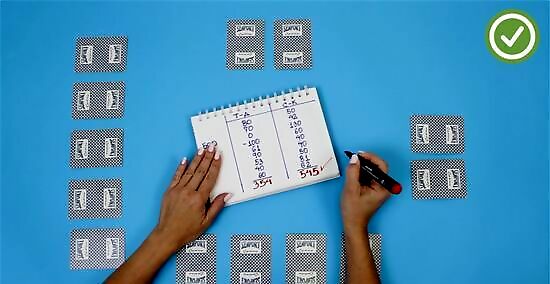
End the game once a team has scored the target number of points. After each round, when tallying the score, check to see if either team has scored however many points you agreed to play to, adding the score from each round to find the total score. If a team has reached that target, the game ends immediately, that team wins the game of Spades, and no further rounds are played.

















Comments
0 comment